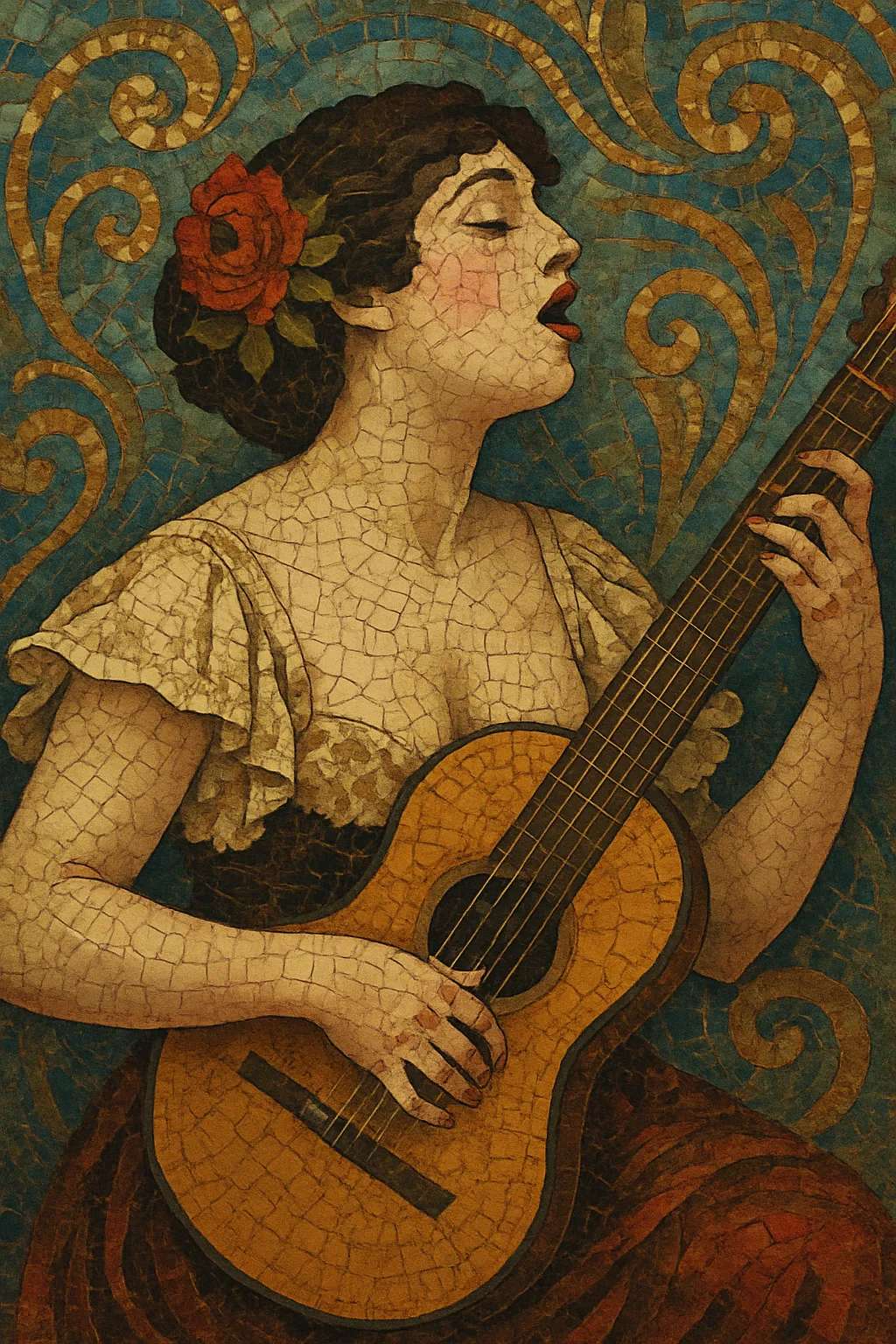Cuplé is a Spanish theatrical song style that flourished in the early 20th century, performed by star female vocalists known as cupletistas in cafés-concert, varietés, and revista (revue) stages.
It is characterized by short, catchy strophic songs with memorable refrains, light dance rhythms (often in 2/4 or 3/4), and lyrics rich in double entendres, urban picaresque humor, and flirtatious innuendo.
Musically, it leans on simple, singable melodies and straightforward harmonies (tonic–dominant–subdominant), frequently colored by habanera-tinged rhythms or gentle pasodoble sway, and is usually accompanied by piano or a small pit orchestra.
While it shares space with zarzuela and later copla, cuplé is lighter, more risqué, and cabaret-like, foregrounding personality, gesture, and costume as much as the song itself.
Cuplé emerged in Spain at the turn of the 20th century, absorbing the stagecraft and cheeky tone of French cabaret and café-concert traditions, as well as British music hall and American-style vaudeville. It coexisted with zarzuela and operetta in urban theatres, but carved out a niche for shorter, topical, and flirtatious numbers presented by charismatic soloists.
The form reached peak popularity in the 1910s and early 1920s. Iconic cupletistas—backed by piano or small orchestras—made hits that circulated through sheet music, gramophone records, and touring variety shows. The music favored accessible melodies, habanera and light march or waltz pulses, and lyrics rife with double entendre and cosmopolitan references. Stage persona, costume, and choreography were integral, making stars out of performers whose interpretations defined the repertoire.
By the 1930s, tastes shifted toward the more dramatic, folkloric-tinged copla, which inherited aspects of cuplé but emphasized narrative intensity and regional color. Political and cultural changes—especially censorship—also constrained the risqué humor and urban sass that had powered cuplé’s appeal, hastening its decline on mainstream stages.
A major nostalgic revival arrived with the 1957 film "El Último Cuplé" starring Sara Montiel, which reintroduced classic numbers to new audiences. Later interpreters and historians helped preserve the repertoire in concerts and archival recordings. Today, cuplé is remembered as a foundational chapter in Spanish popular theatre, bridging European cabaret with Spanish stage traditions and paving the way for copla and mid-century popular song.


